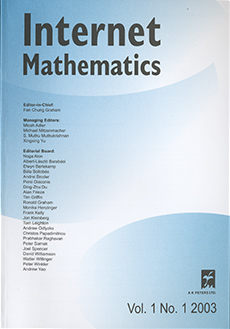Abstract
The spectral and Jordan structures of the web hyperlink matrix $G(c) = cG + (1-c)ev^T$ have been analyzed when $G$ is the basic (stochastic) Google matrix, $c$ is a real parameter such that $0<c<1$, $v$ is a nonnegative probability vector, and $e$ is the all-ones vector. Typical studies have relied heavily on special properties of nonnegative, positive, and stochastic matrices. There is a unique nonnegative vector $y(c)$ such that $% y(c)^TG(c)=y(c)^T$ and $y(c)^T e=1$. This PageRank vector $y(c)$ can be computed effectively by the power method.
We consider a square complex matrix $A$ and nonzero complex vectors $x$ and $% v$ such that $Ax=\lambda x$ and $v^*x=1$. We use standard matrix analytic tools to determine the eigenvalues, the Jordan blocks, and a distinguished left $\lambda$-eigenvector of $A(c)=cA + (1-c)\lambda xv^*$ as a function of a complex variable $c$. If $\lambda$ is a semisimple eigenvalue of $A$, there is a uniquely determined projection $P$ such that $\lim_{c \rightarrow 1}y(c)=Pv$ for every $v$ such that $v^*x=1$; this limit may fail to exist for some $v$ if $\lambda $ is not semisimple. As a special case of our results, we obtain a complex analog of PageRank for the web hyperlink matrix $G(c)$ with a complex parameter $c$. We study regularity, limits, expansions, and conditioning of $% y(c)$, and we propose a complex extrapolation algorithm that may provide an efficient way to compute PageRank.
Citation
Roger A. Horn. Stefano Serra-Capizzano. "A General Setting for the Parametric Google Matrix." Internet Math. 3 (4) 385 - 411, 2006.
Information




